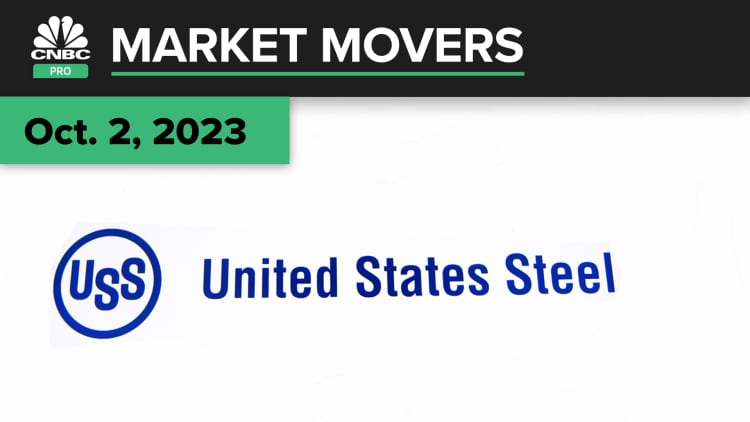
The Dow Jones Industrial Average was lower Monday even after U.S. legislators were able to come to a short-term agreement that staved off a government shutdown.
The 30-stock Dow declined 74.15 points, or 0.22%, to 33,433.35. The S&P 500 inched higher by 0.01% to close at 4,288.39. The Nasdaq Composite added 0.67% to close at 13,307.77 and notch its fourth consecutive positive day.
The small-cap focused Russell 2000 fell 1.6% on Monday, pulling it down 0.3% year to date. This marked the first time the index turned negative in 2023, underscoring trouble among small-cap names. The Russell 2000 is often thought of as a better insight into the health of the broader economy due to its focus on smaller businesses.
The market action took place amid a backdrop of rising bond yields. The yield on the 10-year Treasury topped 4.7% at its session high, marking its highest level since October 2007.
Discover was the S&P 500's top gainer Monday, with shares up nearly 5%. Medical device manufacturer Insulet added 3.5%, while chipmaker Nvidia rose nearly 3%.
Technology, communications services and consumer discretionary were the only positive sectors in the broad market index. Communication services added 1.5%, while the tech sector traded 1.3% higher. Consumer discretionary gained 0.3%.
The Senate passed a continuing resolution with just hours to spare before a midnight deadline Saturday, which was then signed by President Joe Biden into law. The bill keeps the government open through mid-November, an extended period that lawmakers can use to finalize funding legislation.
Historically, the market "has not cared" about government shutdowns, according to Charles Schwab senior investment strategist Kevin Gordon. He noted that the average performance for the S&P 500 from the start to the end of a shutdown has been "basically flat" in the past.
"I think the conditions that we're in and that surround us are much more important. So, as we head into the year-end, if [we] don't see an improvement in key areas of the economy, like housing and manufacturing, if [we] start to see more cracks on labor — I think that would that would definitely take on more importance than just the shutdown itself," said Gordon.


